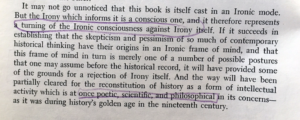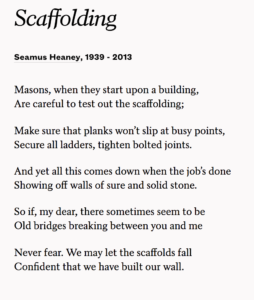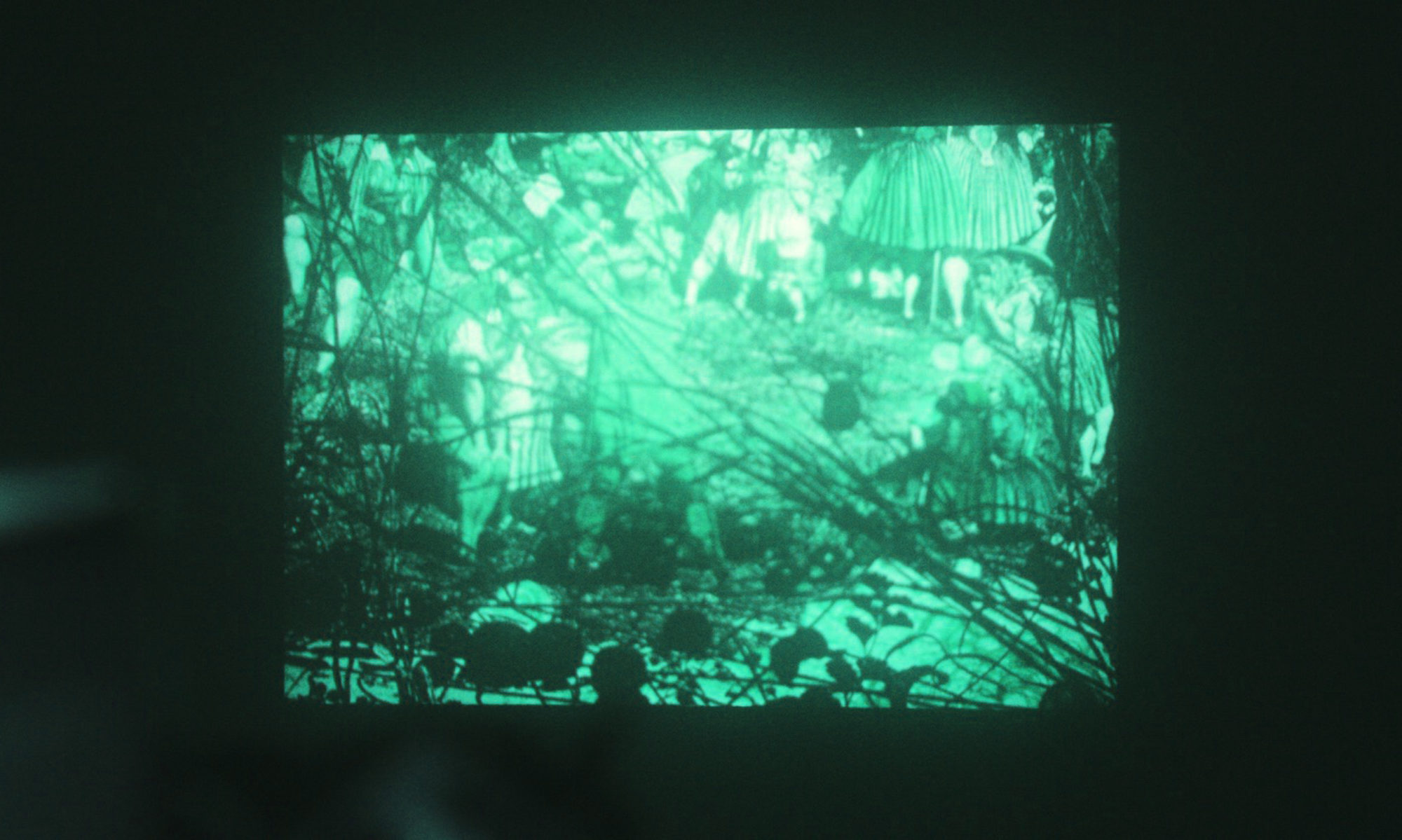Jeff’s post (below) provides a perfect hinge on which to swing slowly across from the fiction of Stendhal to that of Keene, and from the wry omniscience of Burckhardt to the engaged outrage of Marx.
For it is with Marx that we found ourselves concerned in week 5.
Questions of action, of what one does with history or through historical analysis, all of this was very much on our minds in the class discussion today, particularly when we again took up the recursive loop of Hayden White’s own historical mode. I am not quite sure I can recover how we got there. But the temptation to apply White’s method to White himself was too strong, and so we spent some time across the middle zone of our seminar working to make sense of the move by which irony can be turned on irony (with an eye on the transcending of irony). We read again this powerful passage from the end of the preface, where White offers what I take to be the sharpest formulation of his program:

I went so far as to claim that I read White as quite literally performing a kind of burlesque performance of structuralism, whereby the proliferating quaternaries of Metahistory are pushed to, and then passed, their breaking point, and are thereby meant to fall away, leaving…
Well, leaving what? On the one hand, the work may be merely a cleaning out of the stables of the giant old barn of historicism. But I tried a few other metaphors too: the image of using a kind of firehose of irony to stem the irony geyser flooding the realm. Or what about Seamus Heaney’s Scaffolding:

Perhaps as the “scaffoldings” of structuralism fall away something solid will be left behind — something for us. If not a historical consciousness adequate to the conditions of our late modernity, then perhaps at least some foundations of such a thing, some component of that architecture.
Metaphors, metaphors, metaphors.
It isn’t that we can put aside the figures, but we can try to keep in mind what Hayden White actually wants for us: a kind of history (nay, something larger — a historical consciousness) that can be adequate to the science, poetry, and philosophy of our time. This is what Hayden White did not think existed in 1972 — and I, for my part, both think he was correct in his diagnosis of that moment, and believe that his diagnosis is no less relevant today. At the same time, as I suggested in our discussion, I believe it is possible to discern in our moment signs that we are trembling closer and closer to something like the genuine demise of the forms of historical consciousness White can anatomize. Something is likely to come in to the space that will be left…
Ah! Vatic, nebulous…and perhaps simply hooey.
.
Bracketing all this grandeur, what we do know (and chapter seven of Metahistory lays out in great detail) is that a transformation of historical consciousness is possible, and can have profound effects. This is the story of Karl Marx.
We spent a good deal of time working through the structure of Marx’s novel form of history/philosophy (as White lays it out). This meant trying to understand the relationship of base to superstructure, the relationship of the proletariat to the bourgeois, the relationship of mechanist to organicist explanations – and, most urgently, the relationship between the individual and the society (both before and after the Communist revolution).
Without trying to rehash all that here, I want simply to underscore the suggestive parallels we discerned between Marx and White himself. Just as Marx wants us to understand that the paradoxical condition of being simultaneously “free” (in our subjective experience of personhood) and “determined” (in our social condition as victims of structures and dynamics beyond our control) will be definitively resolved by the transformation in the conditions of production that permanently abolish society as we know it, so we can read White as gesturing toward a future historical consciousness that will be unmarked by a pervasive sense of the essential contradictions between poetry and science, and between either/both and philosophy.
Beyond the torments of the ironic condition lies… something.
But what?
.
We cannot simply slot Keene in at this point. Counternarratives cannot be read as a specimen of some new historical consciousness aborning. Or, well, I am not ready to try to impose that reading upon it. But do I think that it is a text that is meaningfully responding to the untenability of the form of historical consciousness White mercilessly anatomizes in Metahistory? Yes, I very much believe it is.
Our conversation about the Keene ranged. I thought we did a good job working closely with several specific portions/features of the text: looking at how specific sentences worked; examining analogous patterns (suspension, “ballooning,” retrospection) that operate at the grammatical and the semantic levels. We discussed how the text both establishes, and violates (perhaps better, renews/revises?), several contracts that it establishes with the reader.
Opinions seemed to vary about the different techniques used by the stories — and perhaps rather than try to work those through here, I’ll save further discussion of the Keene until next week, when we will have the full book behind us. I think many of you felt that you were yourselves a little “suspended” at the midpoint of this volume, and our waiting to see where it is going to go.
Onward! To next week…
-DGB
P.S. Here, for those of you who are curious, is my latest effort on the Punctum Exercises; my date, in the key of Karl Marx…
